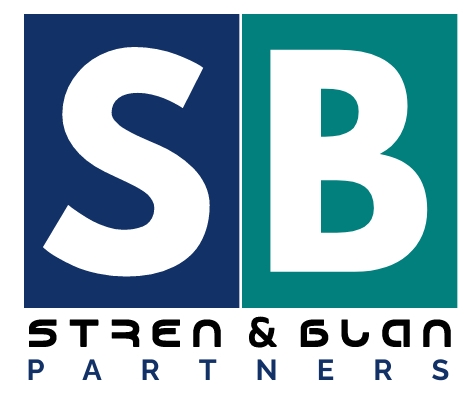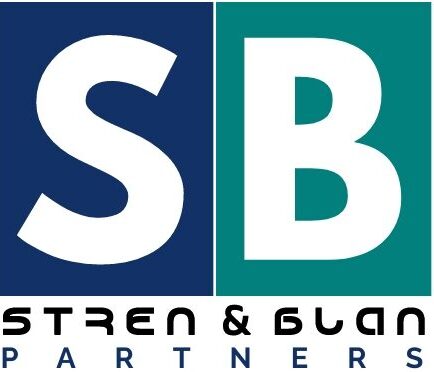Introduction
The current state of Mergers and Acquisitions (M&A) in Nigeria has seen an increased volume of deals than in 2020. According to Statista, the transaction value in the M&A market is projected to reach US$34.11m in 2023. It is expected to show an annual growth rate (CAGR 2023-2024) of 481.94% resulting in a projected total amount of US$198.50m by 2024. The average transaction value in the M&A market amounts to US$6.82m in 2023. This is a testament to the growth and the evolving nature of the Nigerian corporate finance sector. As businesses engage in these transformative endeavours, understanding the intricacies of post-merger integration becomes paramount.
The Federal Competition and Consumer Protection Commission (the “Commission” or “FCCPC“) by virtue of the Federal Competition and Consumer Protection Act, 2018 (“FCCPA” or “Act“) is vested with regulatory oversight of M&A transactions in Nigeria. The FCCPA repealed certain sections of the Investments and Securities Act, 2007 (“ISA“) dealing with the Securities and Exchange Commission’s (“SEC“) previous regulatory oversight of mergers. The FCCPA makes provision for the creation of the FCCPC. The Commission acts as theregulator empowered to prevent and punish anti-competitive practices, regulate mergers, takeovers, and acquisitions, and protect regulated industries in every sector and location in Nigeria. It also creates a Competition Tribunal to deal with any disputes and concerns that may arise.
After a merger is concluded, it is imperative for the newly formed company to be well-prepared to navigate the intricate web of laws, litigations, contract, and obligations with the aim of maximizing potential efficiencies and synergies in line with the merger terms and conditions. Legal expertise becomes essential to guarantee that the integration process adheres to allregulatory requirements, thereby minimizing the potential for legal challenges and liabilities that might hinder the success of the merged entity.
In this article, we will delve into the complexities of post-mergerIntegration, specifically focusing on examining best practices in the Nigerian M&A’s legal regime. Through a comprehensive analysis, we will also explore the unique legal challenges faced by companies in Nigeria during the integration process and the best practices needed in navigating this intricate terrain.
The Dynamics of Mergers in Nigeria
In 2023, Nigeria experienced a substantial surge in M&A activities compared to the previous year, notably in sectors such as; Financial Services, Technology, Media, Telecom (TMT), Energy, Mining, Fast-moving Consumer Goods (FMCG), Manufacturing. Notably are Fidelity Bank Plc’s acquisition of Union Bank, UK, Titan Trust Bank Limited acquisition of 89.39 % of issued share capital of Union Bank of Nigeria Plc and Norrenberger’s acquisition of The Infrastructure Bank, etc. Factors such as Africa’s rising population, urbanization, and the growing influence of free trade reforms on the continent suggest a continuous increase in deals in the region. This heightened merger activity reflects the industry’s drive for market expansion and innovation.
A recent report on businesses in Sub-Saharan Africa gave more credence to integration insights. In this report, 21% of businesses expressed the need for improved due diligence aligned with their integration plans. Similarly, another 21% emphasized the importance of seeking external support from advisers, highlighting the necessity of well-informed strategies for successful integration.
This underscores the critical role of strategic planning and expert support in navigating the complexities of mergers, ensuring a seamless transition for businesses in the ever-evolving Nigerian corporate landscape. Post-integration, businesses need clear internal communications, a unified corporate culture, robust organization-wide governance practices, development of human capital and employee retention policies.
Challenges in Post-Merger Integration in Nigeria
Generally, M&A in Nigeria are subject to a plethora of regulations such as the Companies and Allied Matters Act 2020, the FCCPA, Merger Review Regulations 2020, the Merger Review Guidelines 2020, the Investment and Securities Act 2007 and the Nigerian Stock Exchange Listing Rules for publicly listed companies. The relevant rules are further compounded by industry-specific regulations such as; the Banks and Other Financial Institutions Act, 2020 for the financial sector, the Nigerian Communications Act 2003, for companies in the telecommunications sector, the Insurance Act, 2004 for companies operating in the insurance sector, and the National Broadcasting Commission Act, 2004 for broadcasting firms, etc. Therefore, there is a need to harmonise all these laws for efficiency in M&A transactions. This harmonisation will be conducted between the regulators and relevant stakeholders, such that the mergers process is made less cumbersome.
To ensure regulatory compliance and to achieve the objectives of the merger, extensive due diligence is conducted before the finalization of a merger deal to mitigate potential risks post-merger. Despite these precautions, certain issues may become more apparent and significant after the completion of the merger deal. For example, labour and employment issues could emerge, which would require transparent policies for employees to prevent issues like mass resignations or litigation.
Simultaneously, tax planning structures could surface and willrequire the maintenance and optimization of tax structures to minimize liabilities associated with the merger while ensuring compliance with tax laws.
Also, a lack of understanding of the current organizational structure could cause a fundamental issue post-integration as well. This creates the need to design an interim legal structure accommodating the needs of both organizations while ensuring compliance with relevant laws. Failure to adhere to post-mergerregulations such as registration of the new entity with relevant regulators and compliance with post approval requirements within the stipulated time would pose a significant challenge.
Although the Commission may revoke its decision to approve the merger if the Commission’s earlier decision was based on inaccurate information provided by the parties to the merger. To avoid this, it is advised that all information submitted to the Commission must be accurately vetted by parties before submission.
These challenges underscore the necessity for adept legal guidance to effectively mitigate risks faced by the merged entities. Successful post-merger integration demands a keen understanding of the regulatory landscape to navigate the complexities arising from compliance challenges and stakeholder disputes.
Best Practices in Post-Merger Integration
A meticulous post-integration approach can create the ultimate success of the merger and minimize attendant risk. Recommended best practices include;
Conclusion
The increased number of M&A activities in Nigeria underscores the pivotal role mergers play in the dynamic corporate landscape. As businesses strive for growth and innovation, understanding and navigating legal intricacies become paramount. Legal expertise also becomes indispensable to ensure compliance, minimizing potential legal challenges and liabilities that could impede the success of the merged entitypost-merger. By adopting the recommended best practices, businesses become better equipped to navigate mergercomplexities and ensure a seamless and legally compliant transition in the ever-evolving Nigerian corporate landscape.
REFERENCES
KPMG, ‘Doing Deals in Sub-Saharan Africa’ available at: https://kpmg.com/ng/en/home/insights/2023/10/doing-deals-in-sub-saharan-africa.html
Jeff Aleixo, ‘M&A Post-Merger Integration Guidance’ available at: https://www.linkedin.com/pulse/ma-post-merger-integration-guidance-jeff-aleixo/
BCG, ‘Post-Merger Integration’ available at: https://www.bcg.com/capabilities/mergers-acquisitions-transactions-pmi/post-merger-integration
Goke Kuye, ‘Post-Merger Considerations in Nigeria: Some Legal Considerations’, available at: https://www.academia.edu/8427862/Post-merger_Consolidations_in_Nigeria_Some_Legal_Considerations
Statistica Mergers and Acquisitions – Nigeria | Market Forecast (statista.com). Accessed on November 17, 2023.

